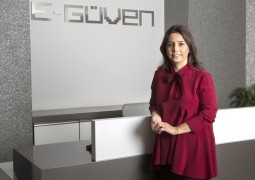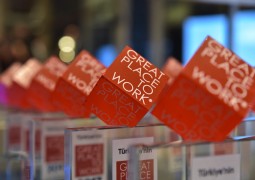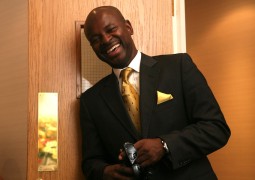Jody Turner from Culture of Future explains Trends in Branding
by 0
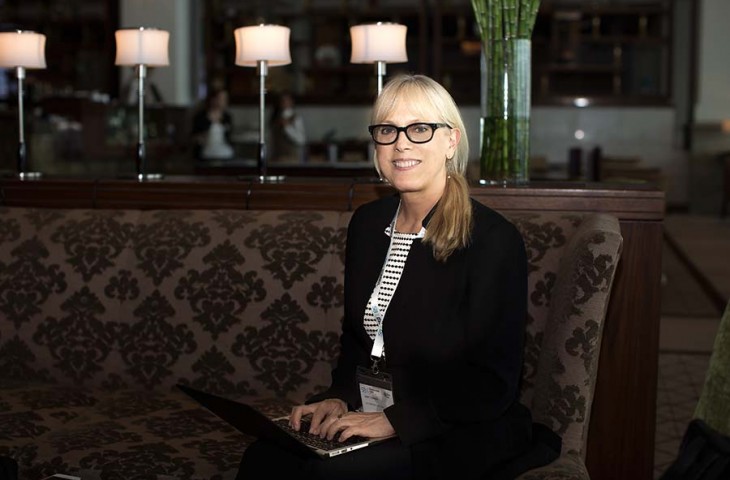
“We have to follow the trends what humans, scientists, society is doing. If you don’t follow the trends, it is going to be a harder future for all of the parties.”
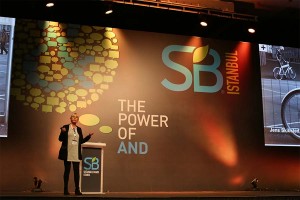
At the Sustainable Brands Istanbul 2016, I had the chance to have a conversation with Individual Consultant from Culture of Future, who works for well-known brands like Apple, GAP, Starbucks, Nike, Adidas and BMW.
She works on branding and innovations in product services. She believes that what we are designing today will be what we will be living in tomorrow. So, we are creating a culture of the future right here in now.
In her presentation, she described incoming five trends. She explained the first trend as “the biggest trend is glocal that is where we are very aware of global conditions of the world that we live in. Someone in Africa may know there is the water issue. Someone in Beijing may know that we have in air quality issue. The social media is letting us know about happenings. Even Christians in the USA are coming around and beginning to realize the challenging times for the earth and becoming environmental. I’m in a mixed country. I prefer to talk about this things openly. Even our limited minded people in America are getting a clue, which is a positive thing. It’s a glocal thing to have each human on the planet aware of the conditions of the day.”
Localisation is critical for a company to understand the terms of the day’s macro trends and create a product or service smart locally using innovation and communication to address a solution. She continues “that’s when we become change makers whether as intrapreneurs inside the company or entrepreneurs outside the enterprise. The local has to be presented in the emotionality of that region in that locality. To engage with people is possible with local contraction.”
I started to think that today’s trends force us to be a more standardized. Now, we began to feel more like each other, talking about the same things in the same way. Are we losing our locality? I wonder and ask her, and she shares the same thoughts, “Well, we are already thinking and behaving closer. The big brands created common lifestyle behaviors. I also believe that there’s the trend of localization. I was in a store at the airport San Francisco and an Asian woman was talking to the guy at the counter as a cashier and she said ” oh yeah I just took a course on how to pick cherries from trees. Today it is a young U.S. thing where U.S. has lost so much of how we do things, crafts, old ways and farming but now kids are going to taking agriculture classes. This trend is called crafting.”
The second trend she talked about is technology and digitalization. She explained; “we have to include the aspect of technology and digitalization. To me technology and digital are separate. People think digitalization is just technology. It is more about how we communicate with each other and in social media. Technology is more how we use the tools of tech to make support lifestyle. For example, Nike Flyknit collection they made this beautiful woven shoe that is very breathable, which was made of discarded cloth materials in the factories and became Nike’s most popular shoe. It has sustainability aspects to it whether people buy it or not. We try to do things that are popular but sustainable at the same time. We don’t talk about it loud; we just have it to be seamlessly a part of everything we do. Crafted with code means that programmers, engineers and designers work together. That is how technology is integrated into the story, experience and design.”
The third trend is thought-leadership. She explained the concept,” the Adidas 3D printed shoe from the ocean trash can be a good example. What there happened was the partnerships with United Nations by the life of the oceans and British designer Alexander Taylor. You get a lot of people work together on solving a problem and this becomes a thought leadership because the designer is a leader as well as United Nations. You get leaders together to address a problem and create something that’s never been created before. I think thought leadership is an excellent idea. The branding world begins to build conversations around it. The ways are just pulling information and give it back out to the world.”
The other significant trend is experience and design. She said, “What you’re doing things as a volunteer and want to allow yourself to expand and evolve. I call this the plus of the super plus like all of the partners are coming together as a super plus plus. That is an example of plusing and allowing you plus to evolve. There is a Copenhagen man, who is is well known for designing a bio mega bike and a series of bikes. He’s also done one for Reebok. One day he decided to do an electric bike. Even though his friends refused, he said “my mission is to provide sustainable transportation and design” and eventually he could do even an electric car. So, this guy figured out that like the Nintendo idea that if you have a mission statement and you happen to be a Nintendo, which used to be card manufacturing company which became a video gaming company. They said “we’re here to entertain.” and they became video game designers. It is a significant change from a card to a video game design business but the mission statement is important, the rest is the part of the evolution. (https://en.wikipedia.org/wiki/History_of_Nintendo )
The last topic she mentions is about Istanbul. “There is an African innovation and design magazine. His creator’s wife is from Zimbabwe and he was spending time there a lot. He realized that there was always great design around him. Then he worked on a magazine called Ogojiii where he could unite and present African brilliants.
The last thing I’d say would be about Istanbul, which is a shining light. I feel like people more think anti-Istanbul but I believe that Istanbul has to work hard to create a brilliant like this magazine in which it shows its economic, business, culture and design genius. The fact that is culturally mixed. I think that you need to put it in the Turkish Airlines planes and let it go everywhere around the world so that people can see the real leading light within.”
I wonder her thoughts on Z-Gen. What would she say about Z-Gen?
“In older generation baby-boom was about social badge branding, which was about creating an identity by having a Gucci Bag for ex. In the Gen-X, it was about anti-branding and they said “I’m in doing the no-logo thing. I like the small intimate, limited edition designed just for me and presented in a little, hidden shop somewhere.” Creative community branding is the millennial thing. They said “I want to be able to work with other people of my peers and figure out the great brands. Then brands companies figured out how to work with that and that was more like the experience, craft and lifestyle economy. In other words, we began to let all of these divisions go and align lifestyle choices. Younger people and older people started making similar lifestyle choices. Gen-Z is entirely different. They’re inclusive because they’ve been born into a multi-culturally culture which is more global-minded. In America, there is a significant movement to accept people more actually as they are. So, this young generation influences pretty significantly and they are called identity-fluid generation.” She answered.
How do you design to identity fluid generation? It is a million dollar question.
She continued, “They call this generation the brand builder. I see that is pretty accurate. In the craft economy, these guys are doing things; there’s a set of skills, and they’re doing things to build a new world. If you want to help with the young people be interested in you, you need to help them to develop idealistically, socially, physically. Their world is building and rebuild things.”
I wonder the world they are going to build. Does she have a vision? I asked her.
She explained, “Well, the young people are so seamless with digital. Kids are just using things, using varieties of communication vehicles and social media vehicles but they have their few favorites. They know how to block out the rest and go ahead and navigate privacy. It is very different than how we are but they’re not scattering themselves out.
I heard on the radio last Friday in the U.S. that coding will be less necessary because there will be machines that can code themselves. That is a significant shift is coming up as well as some fascinating materials like super thin computing technologies that will allow the transmission of electricity in information. The 3D printing is also shifting everything. Big changes are coming out.”
What would she recommend to start-ups, companies to do while they’re directing their market brands?
She said that is why we do trends and continued, “We are not just trying to look at trends to have a fun. We observe what humans are doing because humans are powered today to drive forward a lot of acceptance or non-acceptance. Human is the decision makers on how we want to live and how fast will the adoption of different things happen. We have to follow how quickly they adopt and adapt. We have to follow the trends what humans, scientists, society is doing. If you don’t follow the trends, it is going to be a harder future for all of the parties.”
It looks like following trends is more a necessity rather than fun, as the changes are coming rapidly.
Thank you, Jody Turner, for widening our vision!


